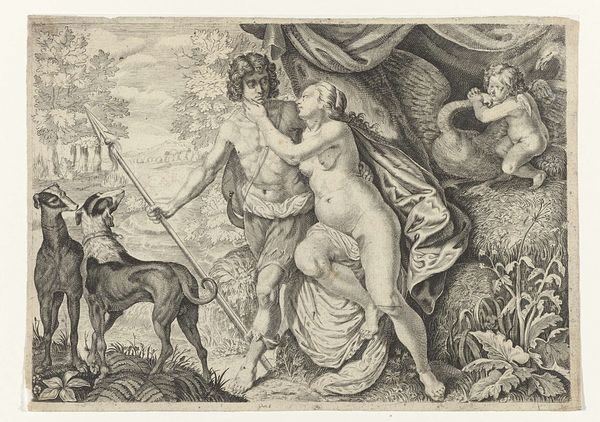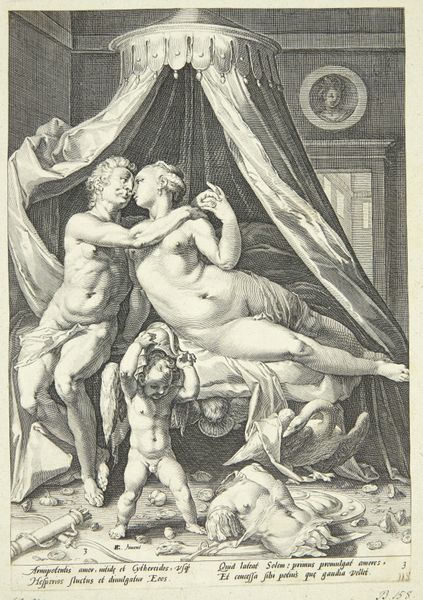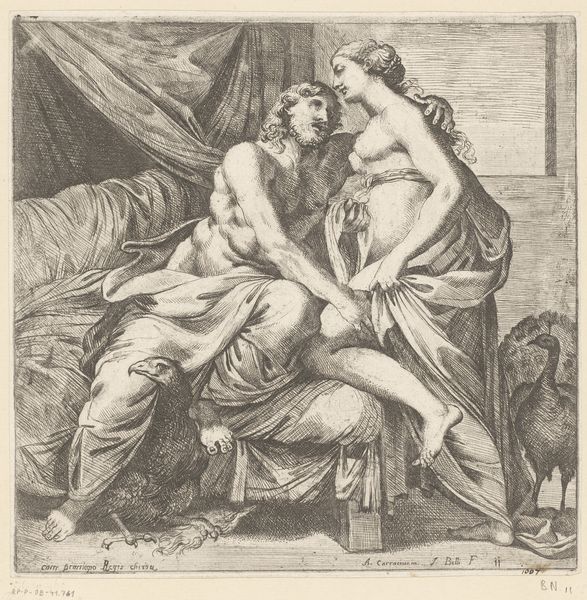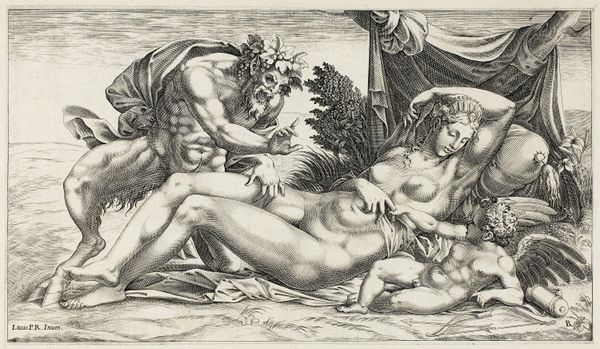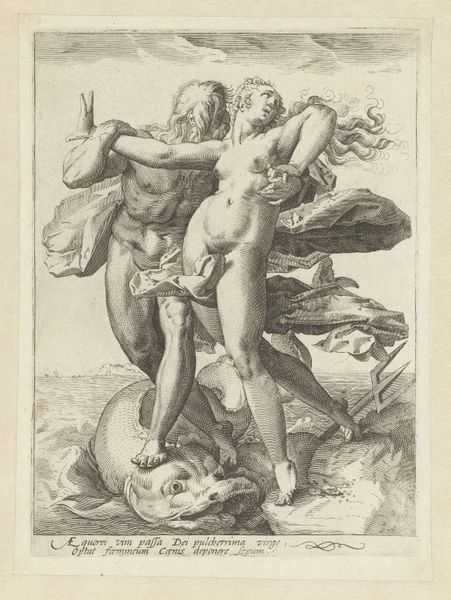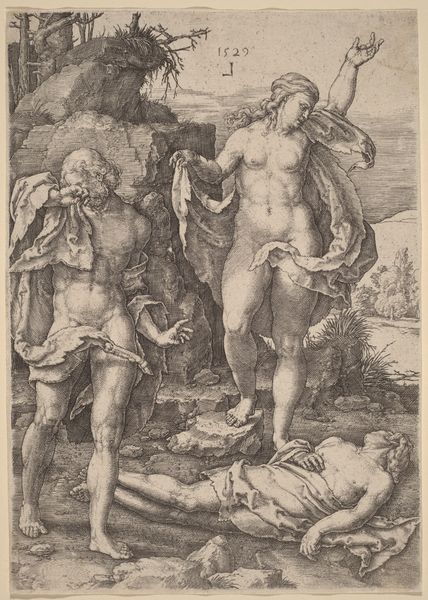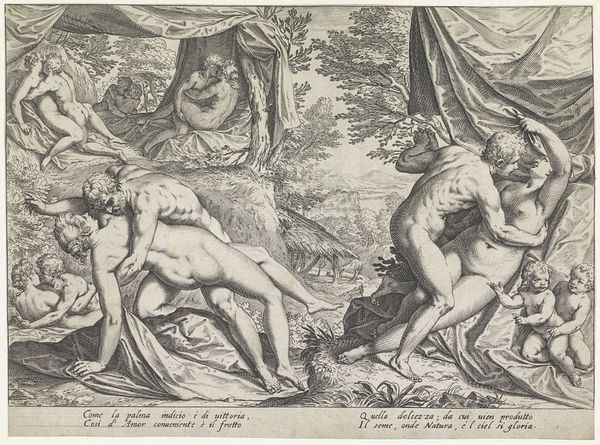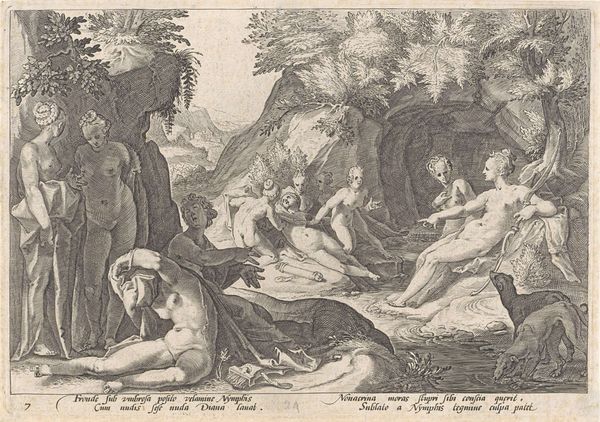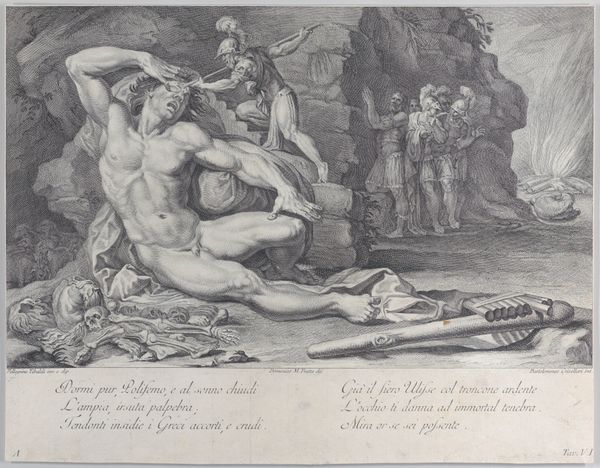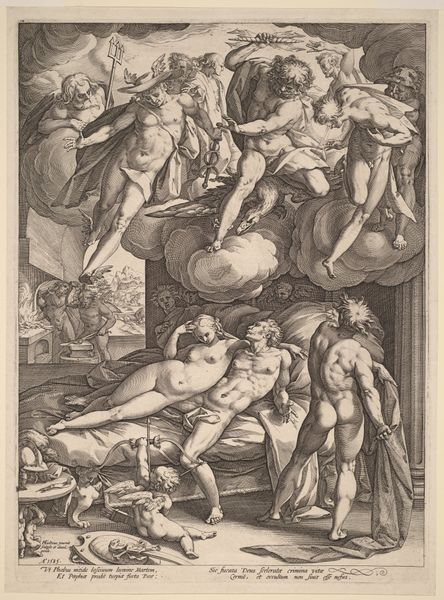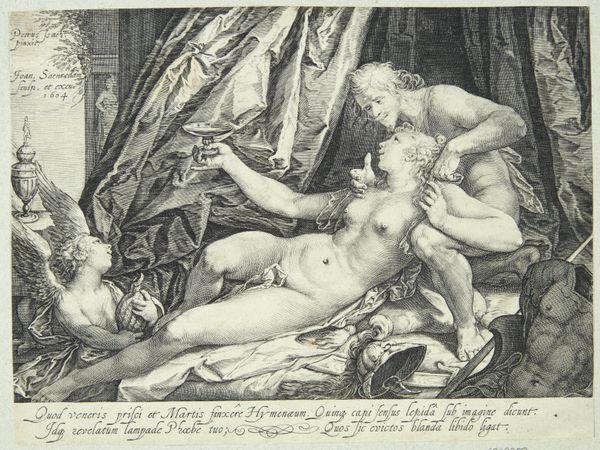
print, engraving
#
allegory
# print
#
mannerism
#
figuration
#
history-painting
#
nude
#
engraving
Dimensions: 308 mm (height) x 358 mm (width) (bladmål)
Curator: Here we have Jacques de Gheyn the Younger's engraving, "Acis and Galatea," dating from around 1590. It’s part of the collection here at the Statens Museum for Kunst. Editor: It's intense. The way they're intertwined—it’s almost claustrophobic. And is that someone playing the flute up there on the cliff? Curator: It’s actually part of the larger narrative, a mythological one ripe with gendered violence. The scene depicts Acis and Galatea in a lovers’ embrace. In the distance, we see the cyclops Polyphemus, a rejected suitor of Galatea. Editor: I see. So the musical figure in the background foreshadows conflict and disruption to the intimate moment. A kind of primal interruption of love by something… less refined. It is interesting how the artist included this little story. Curator: Exactly. Consider how this resonates with depictions of the female body from this time—how Galatea’s agency is completely undermined, visually positioned only in relation to these two male figures, reduced to simply an object of male desire and subsequent conflict. Editor: That positioning you described also impacts how we consider symbolic representation. Sea nymphs traditionally signify grace and beauty. In contrast, here, Galatea is presented as passive in order to facilitate conflict between these masculine archetypes. Even that laurel crown on her head seems less celebratory, and more ornamental. Curator: Yes, the inscription on the engraving also confirms that power imbalance, as both men literally vie for the sea nymph Galatea. Gheyn places Galatea at the nexus of themes dealing with not only beauty, but with possession and dispossession, reflecting back upon art history as itself a battleground of bodies, power, and representation. Editor: Viewing this now makes me consider the different symbolic paths in art, and to whom the symbolism truly serves. The past may be fixed but perception isn’t. Curator: I concur, thinking intersectionally adds more shades and light to those paths and hopefully allows us to consider whose voices aren’t inscribed into these visual histories.
Comments
No comments
Be the first to comment and join the conversation on the ultimate creative platform.

